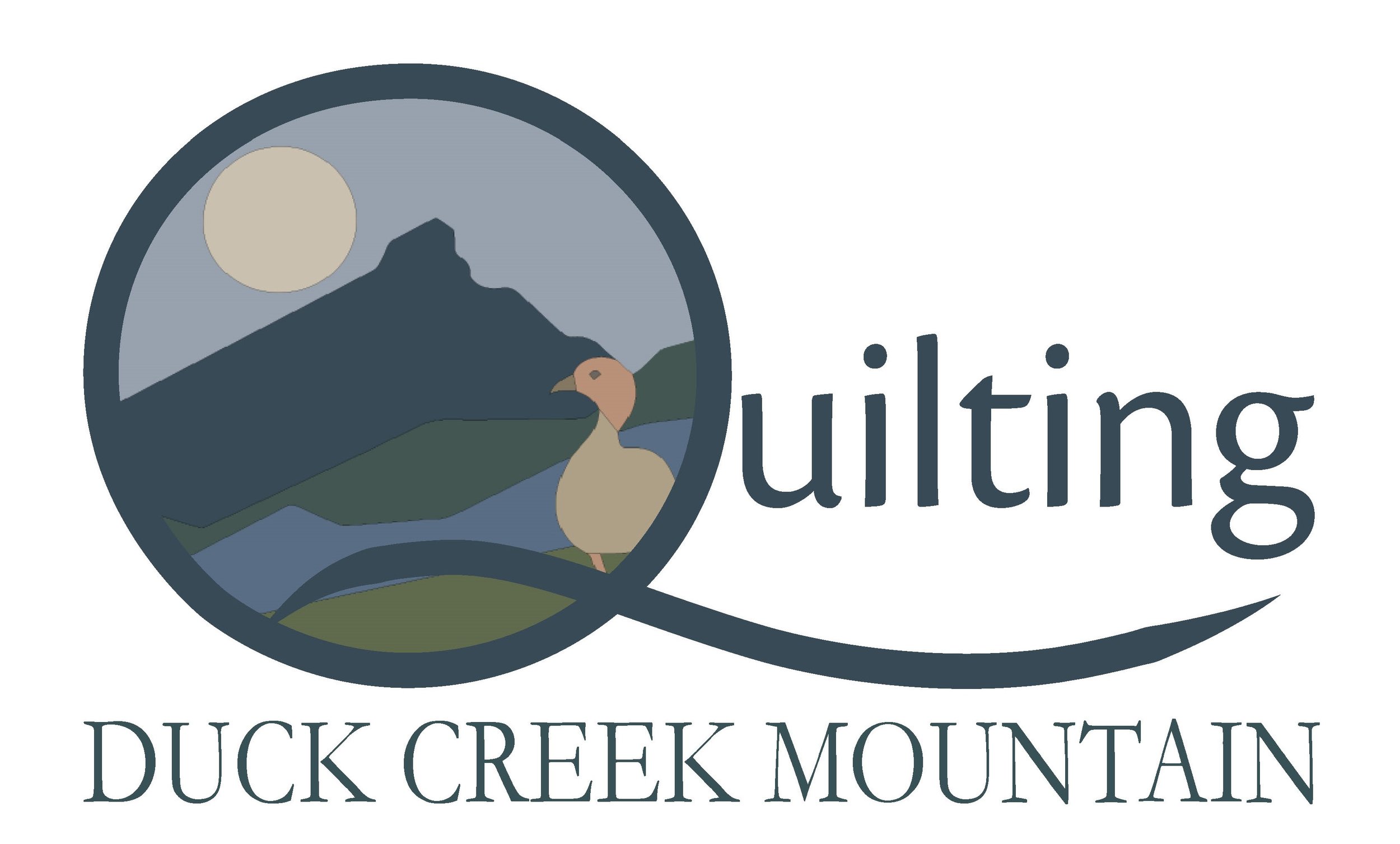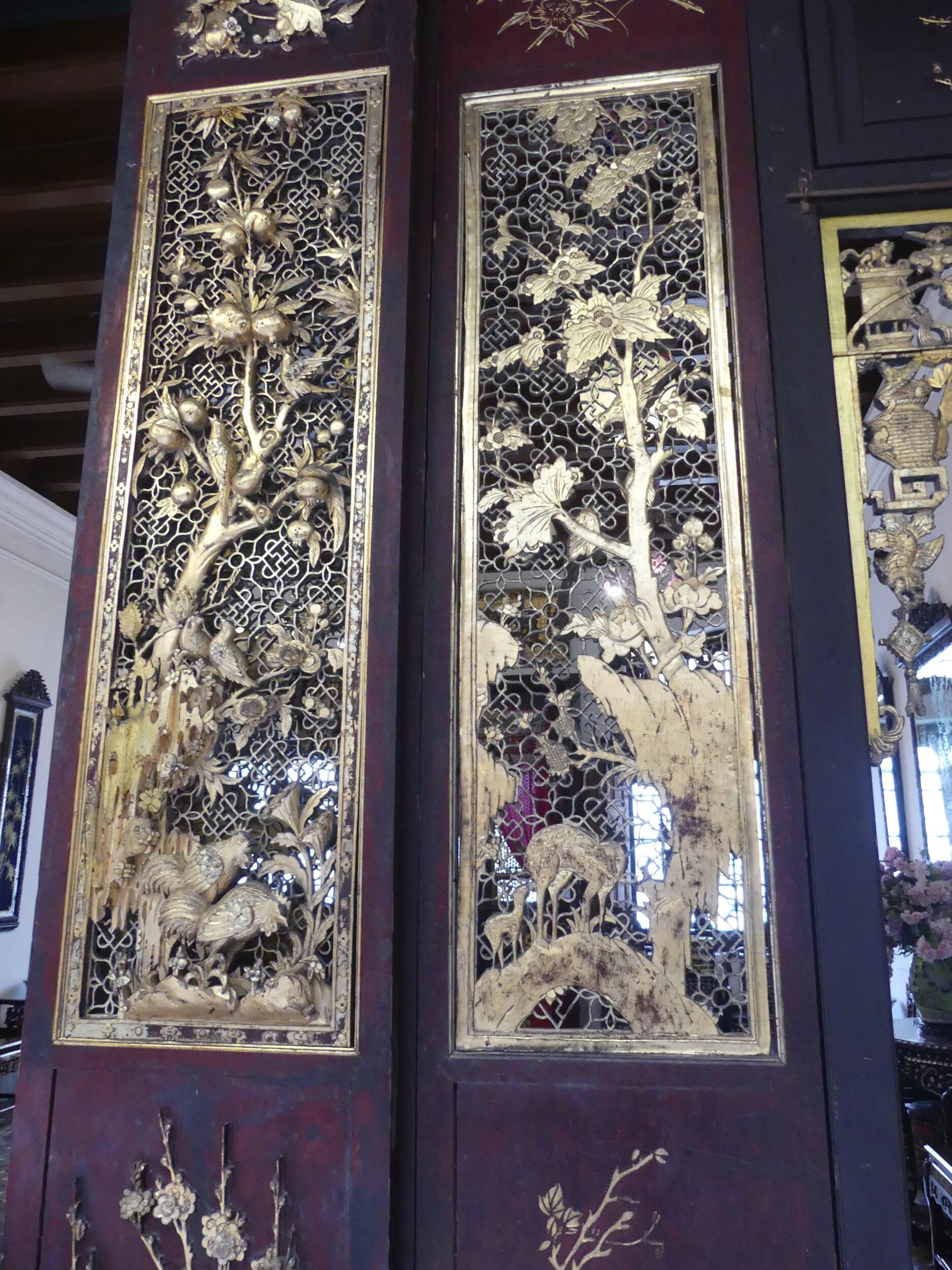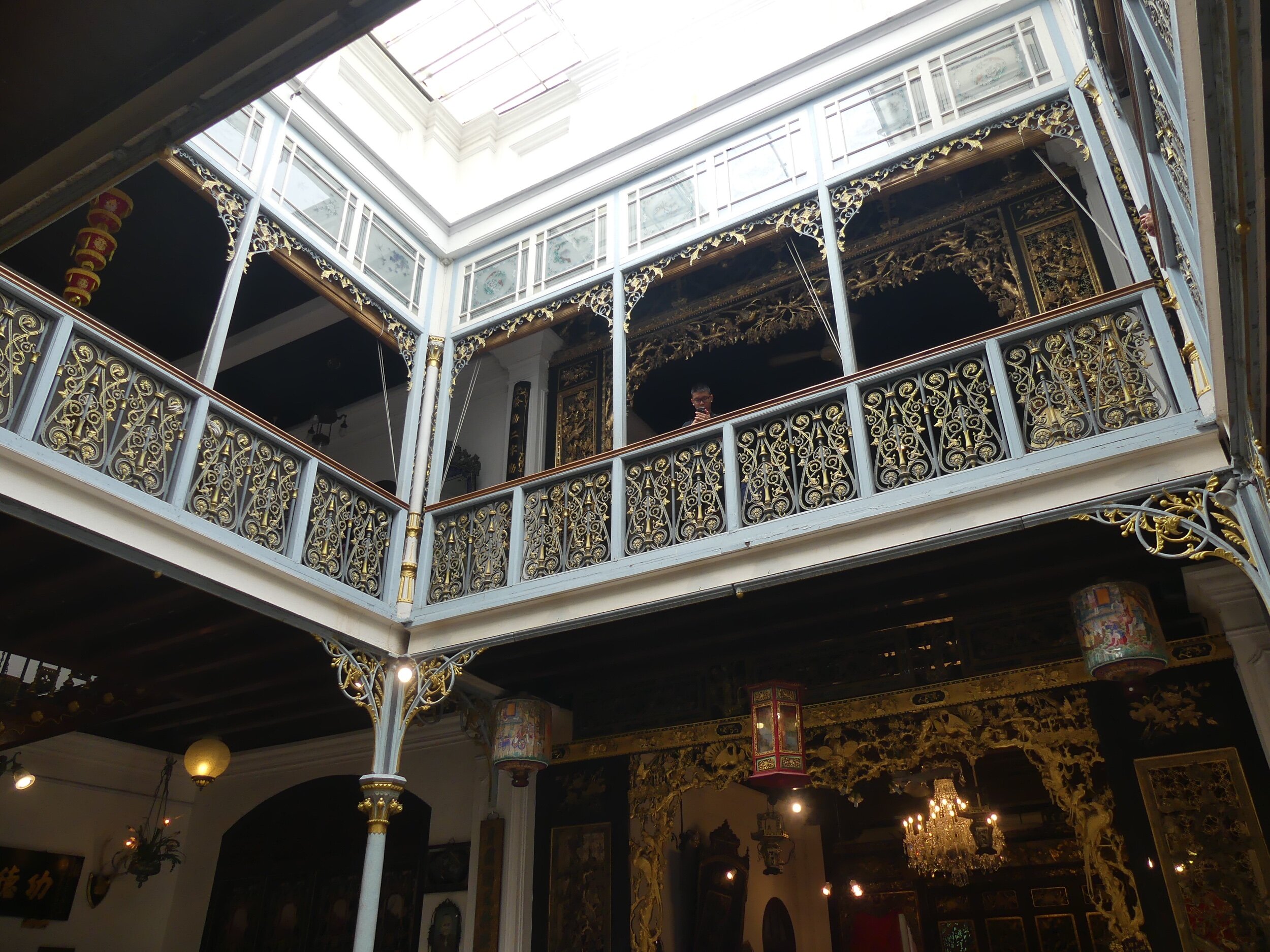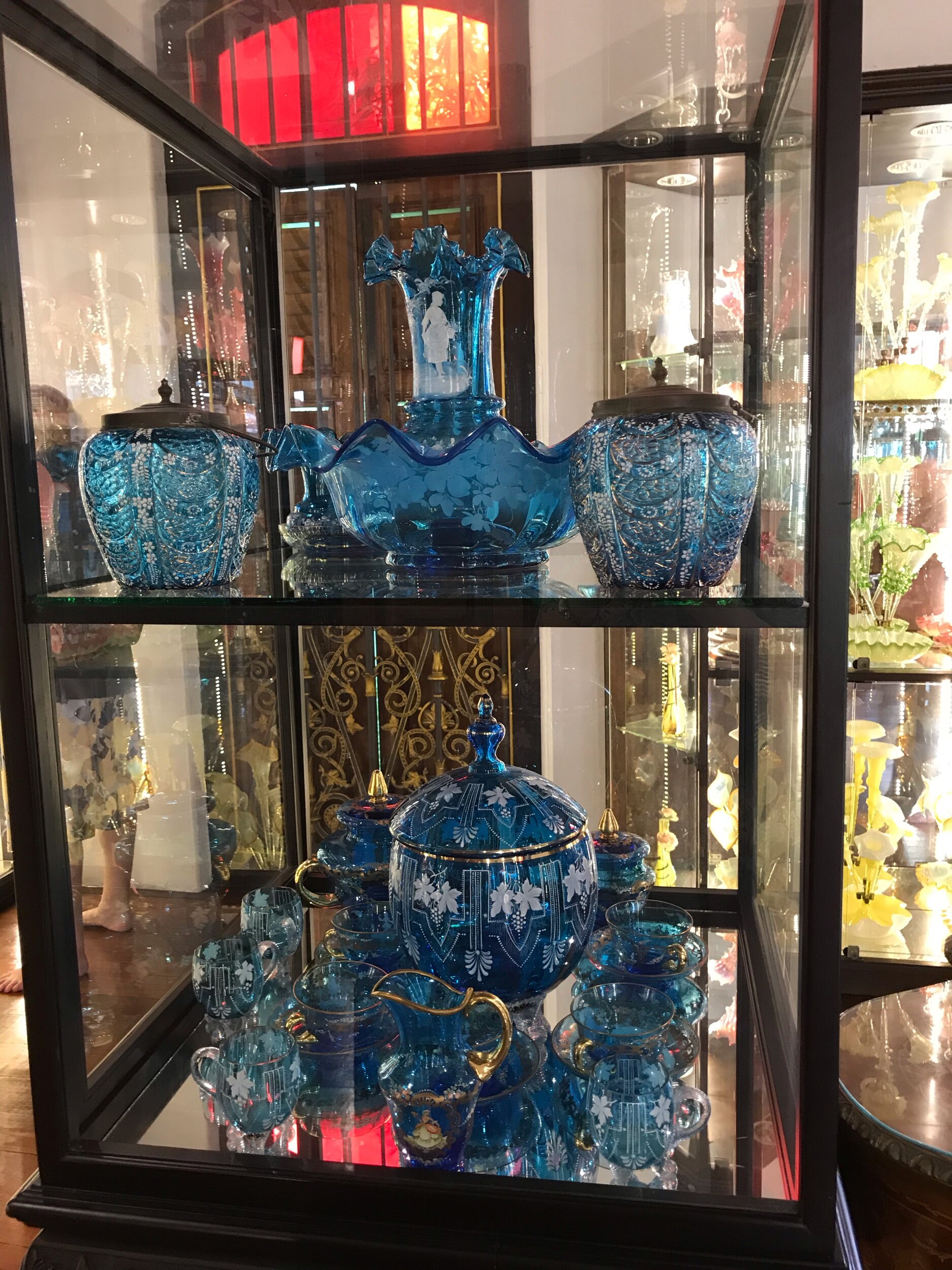The wonderful Peranakan Museum - Penang, Malaysia
I was lucky enough to be invited to the wedding of a friend’s daughter in Penang in June, 2019. Being in the middle of the school term I booked a week away and decided to spend it sightseeing n Penang and of course attending the wedding (which was so lovely). While in Georgetown which is the older part on Penang Island, I visited the Peranakan Museum. This was just wonderful.
I had a fabulous time in Georgetown, checking out the street art, lunching at the Eastern and Oriental Hotel, checking out the Indian fabric shops and sightseeing. On the third day I was there I discovered the Pinang Peranakan Mansion … Mind blown! I could not believe the quantity of fabulous textiles and artefacts from the Straits Chinese culture, lovingly collected and displayed by Baba Peter Soon, the present day owner of the mansion.
The mansion itself was built by a very wealthy Chinese businessman and trader from the 19th century, Chung Keng Quee. Penang was built by the British as a free port so visiting ships paid no taxes. Naturally this increased trade and people became extremely wealthy. As a result, the mansion incorporates features from all over the world, cast iron pillars from the UK, English ceramic tiles, Italian glass, Chinese carving and so on.
The mansion has been restored by Baba Peter Soon and houses his extensive collection of artefacts from the Straits Chinese, china, glass, furniture, gold, beaded slippers and curtains, silk embroidery, wedding finery, and so on. There was just so much beautiful work to look at.
My major excitement was, of course, the textiles, but before that. I’d like to share a quick look at some of the other rooms because it was stunning.
Firstly, the entry hall, the pool, the carved screens, the furniture: while waiting for the tour to start, we sat around on carved and inlaid chairs admiring the beautiful surroundings. The first room was a courtyard, with the centre open to the sky and a pool that would fill in the rain. The Chinese ensured the fengshui was good and this determined a lot of the features. Staircases led up to the second story and the ornate pillars supporting the balcony level were iron and cast in Glasgow. The dining room to the side, used to entertain western guests, had a long table, not the usual round table, but mirrors placed on either side enabled the master of the house to see both the entrance doors and the stairs and keep an eye on comings and goings while dining.
Formal dining room, Penang peranakan museum
Carved screens separated the private and public areas of the house. These screens were heavily carved with Chinese symbols representing good fortune and gilded with gold leaf. The carving had a particularly light and airy look as the images were carved to let light and r through the screen. The screens were there to prevent the entry of evil spirits, but they also enabled womenfolk to see who was visiting without revealing themselves.
Screen, peranakan museum
After starting the tour and admiring the furniture, china, porcelain, glassware and so much more, we crossed a courtyard (furniture, fountains and carvings) and entered another building which contained the kitchens. This had been refitted with artefacts from the time, spice drawers, dinner services, food containers, sieves and so on.
The family temple was on the second floor and was spectacular. It was open in the central part and the roof ornaments were made of glazed ceramics. Dragons were a sign of importance as only certain ranks could display them. The blue tiles at the edges of the roof made in a semicircular shape with a central point were made so that water would slide to the point and then drip off forming a beaded curtain of water when it rained. I loved the idea of this, all I get at home is a waterfall if I haven’t cleaned the gutters. A beaded curtain of falling water is so much more cool.
The clothing of the Nyonyas was interesting. It comprised a white cotton undershirt with a coloured, heavily embroidered cotton or silk top joined at the front by three brooches called Kerosang (no buttons were used). This was worn over a batik cotton sarong. The embroidery was often combined with cutwork to create fabulous floral motifs. Beaded slippers called Kasot Manek were worn by men and women. The beading was fabulous.
Other highlights were the wedding bed and the bridal chamber. The bed itself was an elaborately carved and gilded four post bed hung with beaded curtains and silk embroidered curtains and furnished with silk mattress and pillows also heavily embroidered and embellished. The motifs used were auspicious wedding symbols such as plum blossoms and butterflies for the courting phase, roosters and hens with chicks for fertility and a pine tree, white crane and deer for a long and happy life together. Over the ten days of the wedding ceremony the decorations could be changed to reflect the stages of life.
My next blog post will just be on the textiles, beadwork, gold and silk embroidery, curtains, wedding clothes and slippers. Even though I thought I took a vast number of photos, there was even more there. The whole thing was just amazing.











